Table of Contents
Sports and Nutrition Part 2
Sports and Nutrition Part 2, In this Part we would learn about Carbohydrates, Fat, Protein and Water.
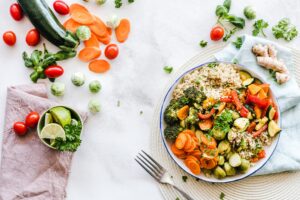
| In the previous part we learn about Macro and Micro Nutrient Now we would discuss Macro Nutrient in detail. |
| Micro Nutrients consists of Carbohydrates, Protein, Fat and Water. |
| They all needed in a big proportion for our body that’s why they are in Macro Nutrients. |
| Now one by one in Details- |
Carbohydrates: Sports and Nutrition Part 2
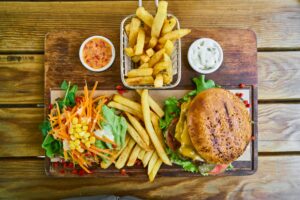 |
| 1. Carbohydrates are a very important and major source of energy. |
| 2. If we divide Carbohydrate then it will divide into 3 parts I) carbo II) hydr III) ate |
| 2(a). the first part is ‘carbo’ means that they contain carbon. |
| 2(b). the second part that is ‘hydr’ means it contains hydrogen |
| 2(c). the third word ‘ate’ means that they contain oxygen. |
| 3. the ratio of hydrogen atoms to oxygen atoms is 2:1 |
| 4. It requires less amount of water. |
| 5. There are two main types of carbohydrates, i.e., simple carbohydrates and complex carbohydrates. |
Some details of Simple and Complex Carbohydrates are given below;-
| Differences between Simple Carbohydrate &Complex Carbohydrate | ||
| S.No | Simple Carbohydrate | Complex Carbohydrate |
| 1. | They contain single monosaccharide units. | made up of hundreds or thousands of monosaccharide units |
| 2. | Some simple carbohydrates are present in healthful foods, such as milk and whole fruits, which contain vitamins, minerals etc. | Complex carbohydrates are also available in processed foods without much nutrition, such as refined white flour. |
| 3. | Simple sugars give food a sweet taste. | Complex carbohydrates are less sweet than simple carbohydrates |
| 4. | Simple carbohydrates are digested faster | Complex carbohydrates are digested slow. |
| 5. | take less time to absorb to the body. | take more time to absorb to the body. |
| 6. | Simple carbohydrates quickly raise blood glucose levels. | Complex carbohydrates slowly raise blood glucose levels. |
| Examples:-sucrose (table sugar), lactose and maltose. | Examples:- Starch, dextrin, glycogen and cellulose | |
Proteins:
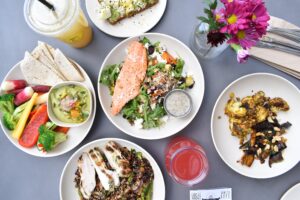 |
| 1. Proteins contain—carbon, hydrogen, oxygen, nitrogen, and sometimes sulphur. |
| 2. Protein is a macronutrient that is essential to building muscle mass, nails, hairs etc. |
| 3. The structure and function of our bodies depend on proteins. |
| 4. The regulation of the body’s cells, tissues, and organs cannot happen without them. |
| 5. Proteins are very large molecules, so they cannot be directly absorbed into our blood. So they are turned into amino acids by our digestive system. |
| 6. There are 23 amino acids. Out of these, 9 amino acids must be available in the diet. |
| 7. Marasmus and kwashiorkor are protein deficiency diseases in children. |
Fats:
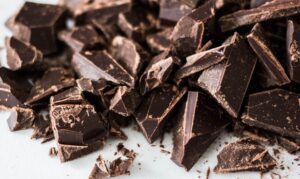 |
| 1. Fats contain carbon, oxygen and hydrogen in the percentage of 76, 12 and 12, Fats are necessary for many body functions. |
| 2. The body uses fat as a fuel source, and fat is the major storage form of energy in the body. |
| 3. Fats keep us warm and protect our organs. |
| 4. Fats also help in the production of hormones. |
| 5. There are three different groups of fats in the diet. that is, saturated fats, polyunsaturated fats and mono-unsaturated fats. |
| 5* All three groups have different characteristics and they react in different ways inside the body. |
| 5(a). The intake of saturated fats increases the chances of heart diseases as it increase the cholesterol in the blood. It is found in fast foods, pastries and biscuits. |
| 5(b).The polyunsaturated fats and mono-unsaturated fats help in lowering the blood cholesterol. The polyunsaturated fats are slightly better than mono-unsaturated fats. |
| Note: Fats are essential in diet but the quantity of intake should be limited. |
Water
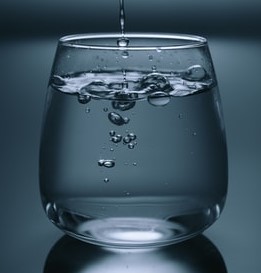 |
| 1. Water is a compound which is made up of hydrogen and oxygen elements in the ratio 2 : 1. |
| 2. Our blood also contains 90% of Water helps in the transportation of nutrients to the cells of the body. |
| 3. It is also important for the excretion of waste products. |
| 4. It also regulates the body temperature. |
| 5. It is vital for various chemical reactions taking place in our body. |
| 6. It is essential for the body’s metabolism. Sports and Nutrition Part 2 |
To go for other parts of this Chapter click below:-

Everything at s single place . Thanks a lot sir
Helpul Content With great Knowledge.
Everything at a single place . Thanks a lot sir
Pingback: Sports and Nutrition Part 9 - Cbse Physical Education